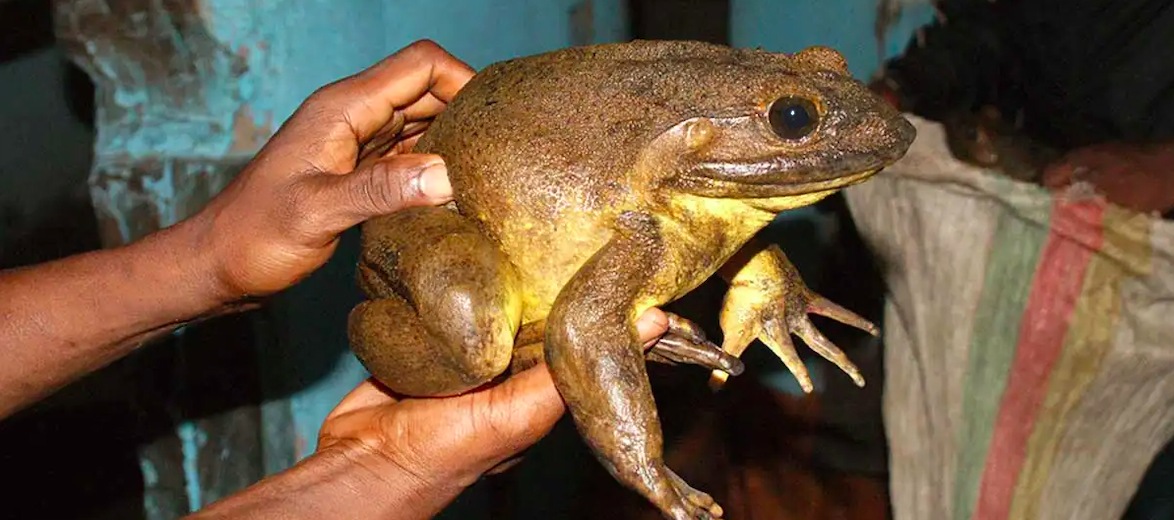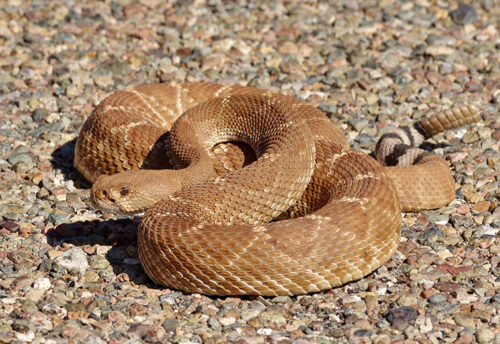
The Goliath frog, aka giant slippery frog, is the largest known frog species in the world. You can find these beasts in Cameroon as well as in Equatorial Guinea. They prefer streams and fast-flowing rivers with sandy bottoms, in rainforests. Sadly, these giants are listed as Endangered by the IUCN; and their populations are decreasing. This is due to habitat destruction at the hands of logging, housing developments, and agriculture. They also suffer from over-collecting for the pet trade and pollution.
First the Stats…
Scientific name: Conraua goliath
Weight: Up to 7 lbs.
Length: Up to 12 inches
Lifespan: Up to 15 years
Now on to the Facts!
1.) These frogs prey on dragonflies, locusts, crabs, small snakes, fish, baby turtles, and even other amphibians. They have also been known to take bats. Tadpoles feast only on aquatic plants, like Dicraeia warmingii.
2.) Unlike other frogs, Goliaths lack vocal cords and thus don’t croak to find a mate.
3.) Like most other frogs, they are nocturnal (active at night).
4.) Snakes, Nile crocodiles, and Nile monitors all prey on the Goliath frog. Tribes will also hunt them as bush meat. The eggs and tadpoles are preyed on my aquatic insects like dragonfly larvae.
5.) Mating season occurs from July – August.
But wait, there’s more on the Goliath frog!
6.) Different from other frogs, these amphibians don’t have nuptial pads (swelling on the forearms of males which facilitate grasping of females during the mating ritual).
7.) During mating season, males will build semi-circular pools near the riverbanks using the rocks and gravel. They will then wrestle with other males in order to gain mating rights.
Did you know…?
They’re not only large, but they can also jump far… up to 10 feet!
8.) Females can lay up to a couple thousand eggs and will attach them to vegetation on the sandy bottom of rivers.
9.) It takes up to 95 days for the tadpoles to mature into froglets.
10.) There is no parental guarding of the eggs. Once they’re laid and fertilized, that’s it. They’re on their own.
11.) The Goliath frog has been around for about 250 million years.
Now a Short Goliath Frog Video!
Be sure to share & comment below! Also, check out the Critter Science YouTube channel. Videos added frequently!
Want to suggest a critter for me to write about? Let me know here.



